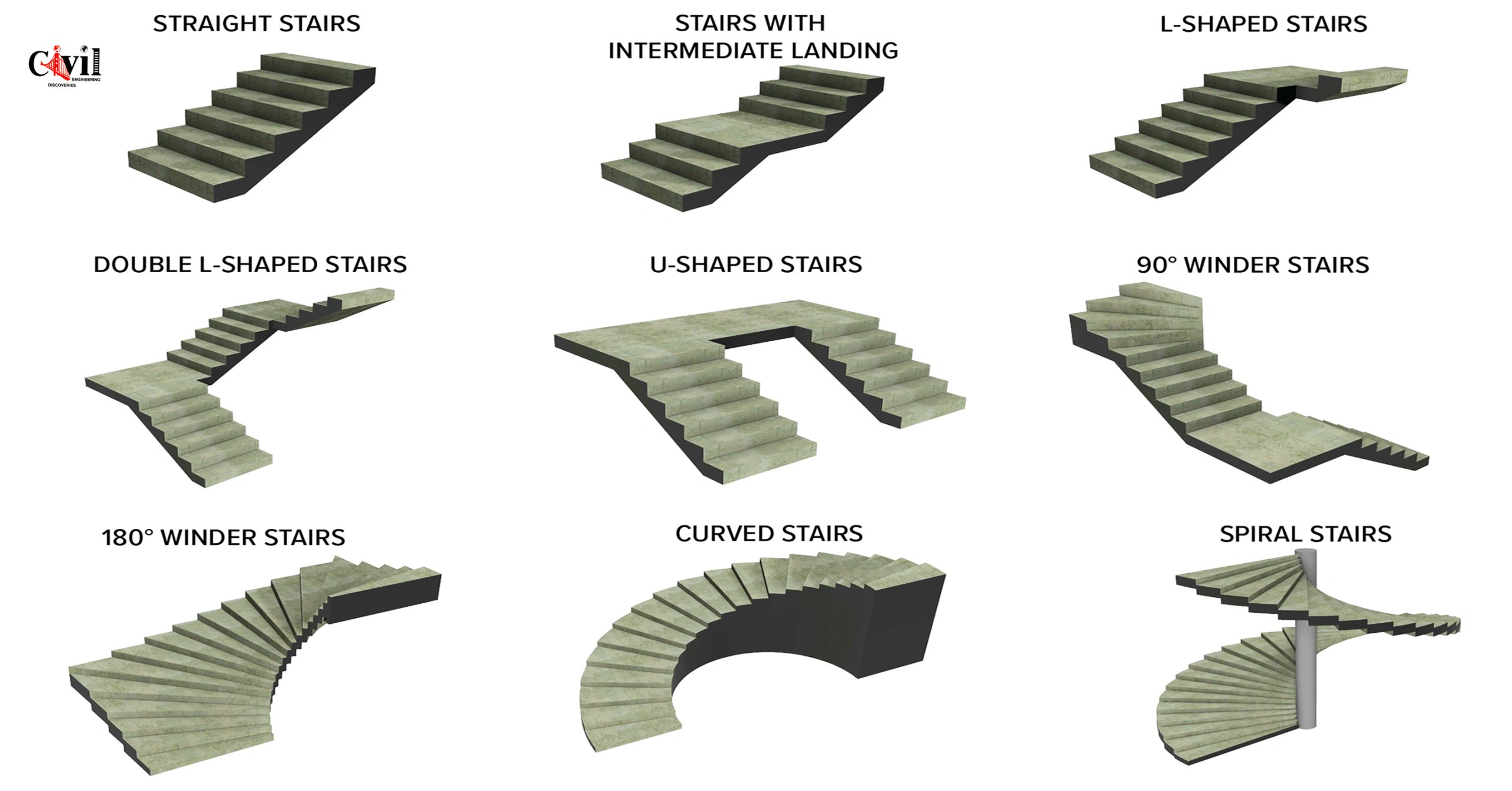Stair types refer to the design and layout of a set of stairs. There are several different types of stairs, each of which serves a specific purpose and is more or less appropriate for different contexts.
Straight stairs are the most common type and have a uniform rise and run, making them simple and efficient. L-shaped stairs have a landing that changes the direction of the stairs, and are often used in buildings with limited space or where the stairs need to follow the layout of the building. Winder stairs have treads that are narrower on one side than the other, allowing them to turn a corner while using a smaller footprint. Spiral stairs are circular stairs that are compact and space-efficient, but can be more difficult to navigate.
Different stair types are important because they allow designers to choose the most appropriate solution for a given context, based on factors such as the available space, the intended use of the stairs, and the needs of the users.
Straight stairs are the most common type of stairs and can be found in a wide range of buildings, including homes, offices, schools, and public buildings. They are simple, efficient, and easy to use, making them suitable for most purposes. They are often used in situations where there is sufficient space and where the stairs do not need to change direction or follow a specific layout.
Spiral stairs are circular stairs that are compact and space-efficient, but they have some limitations that make them less common than other types of stairs. One of the main reasons why spiral stairs are not more common is that they can be more difficult to navigate, especially for people with mobility issues or for those carrying large objects. Spiral stairs also have a more limited capacity compared to straight or L-shaped stairs, as they are typically narrower and have less space for multiple users to pass each other.
Winder stairs are stairs that have treads that are narrower on one side than the other, allowing the stairs to turn a corner while using a smaller footprint. These stairs are often used in situations where space is limited, or where the layout of the building requires the stairs to change direction. Winder stairs can be more efficient than L-shaped stairs in terms of space usage, as they allow the stairs to follow a more compact path. However, winder stairs can be more difficult to navigate.
Click Here To See Essential Details About RCC Staircase Construction You Can’t Miss!





















